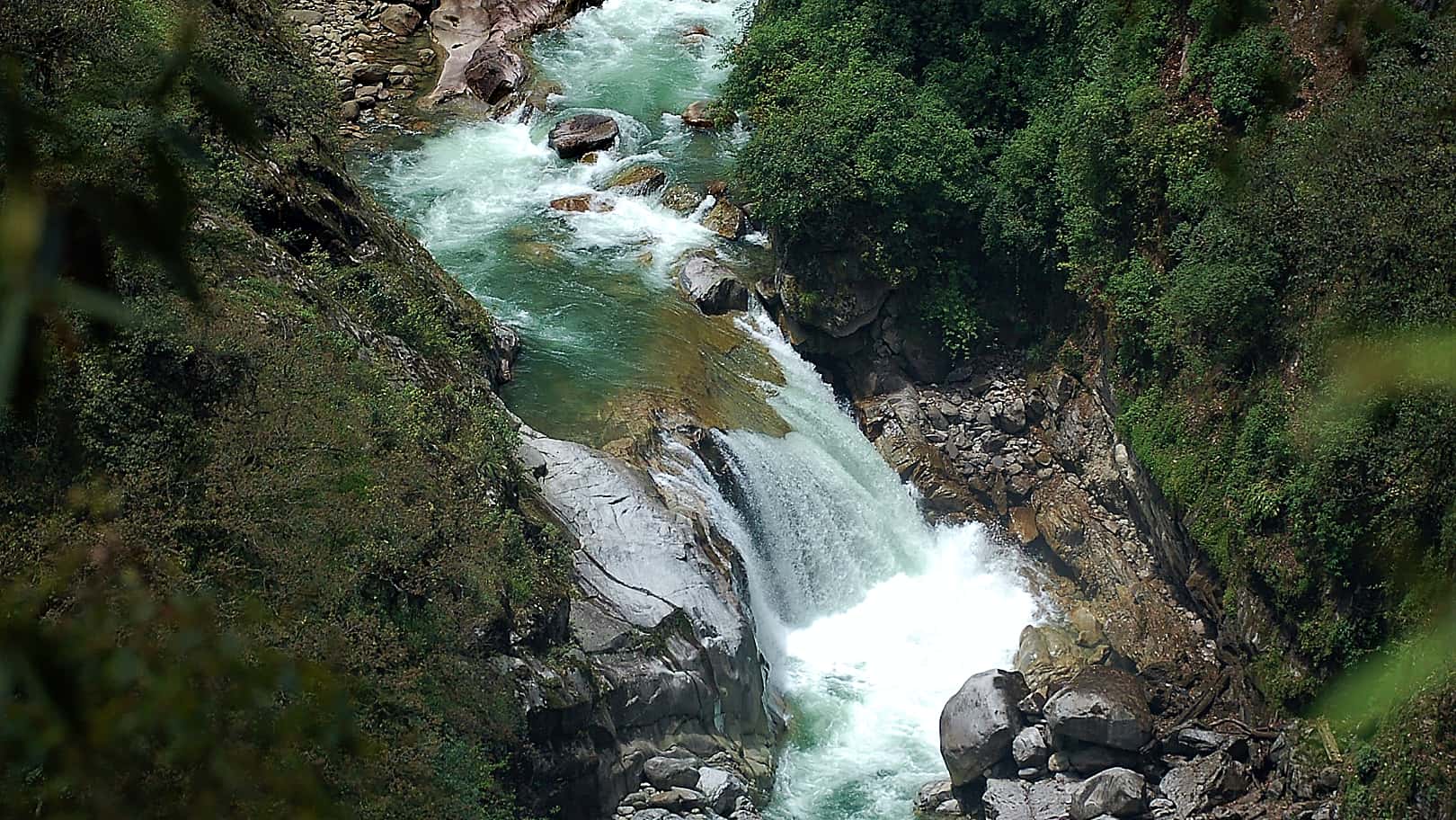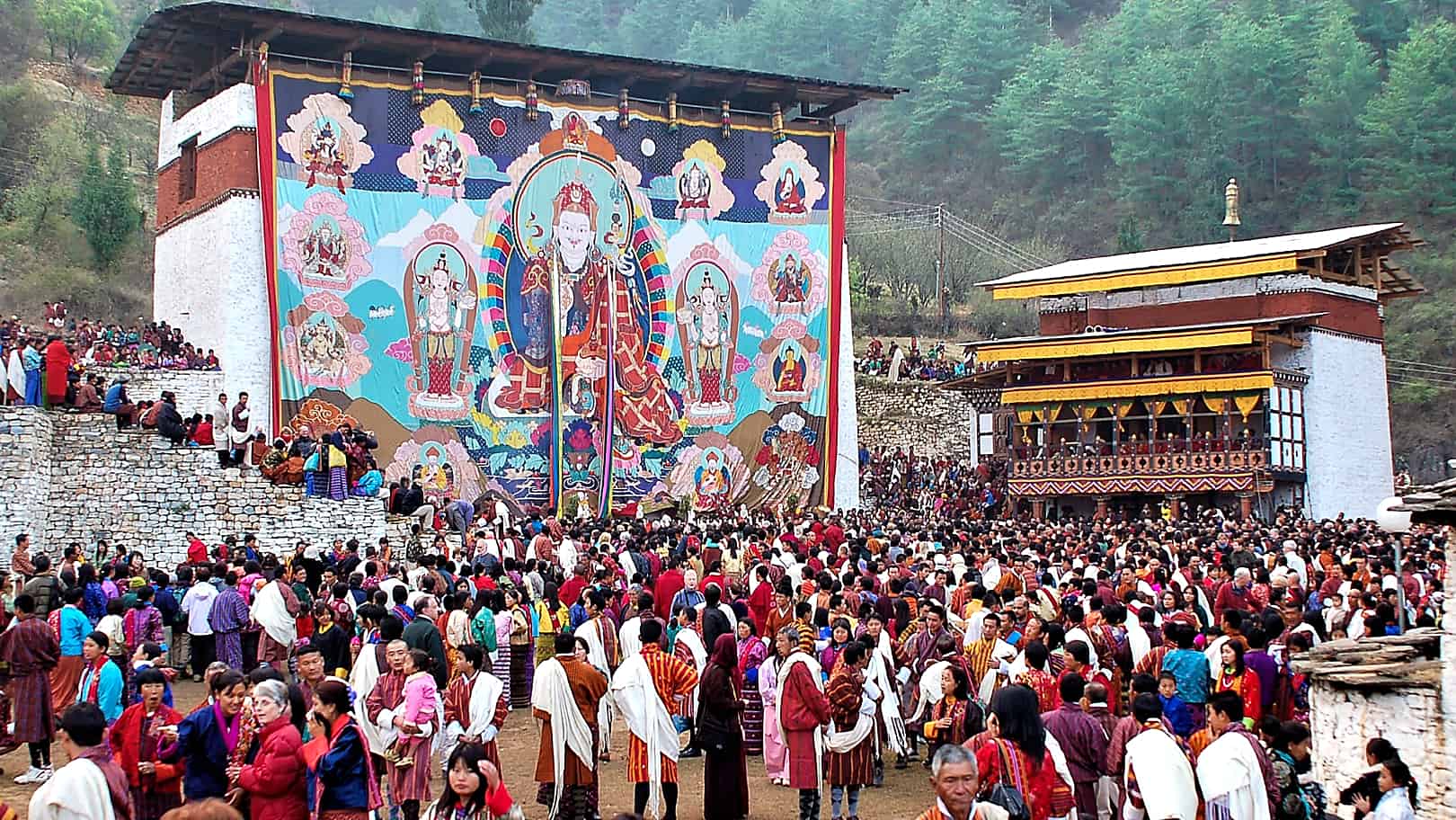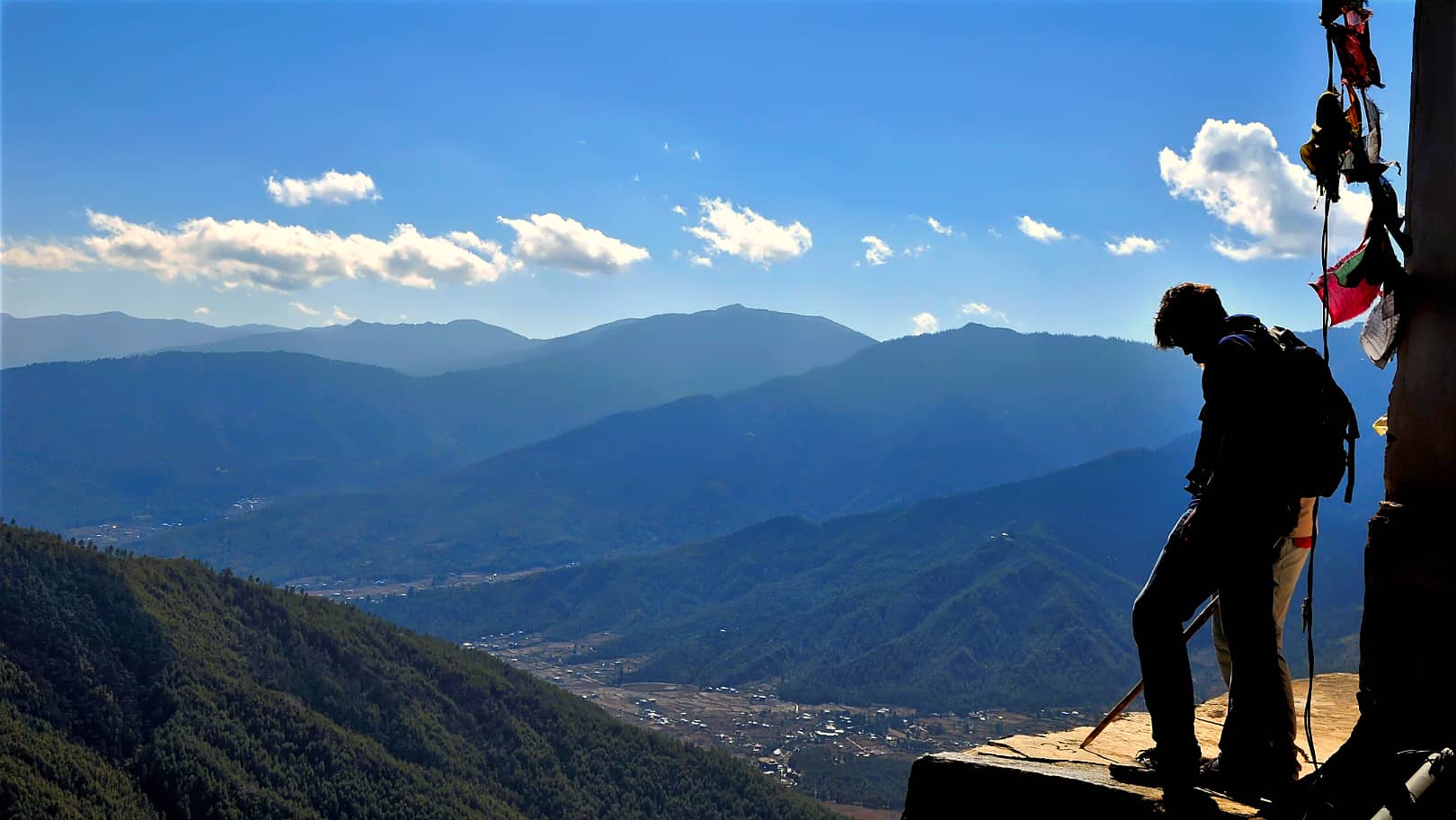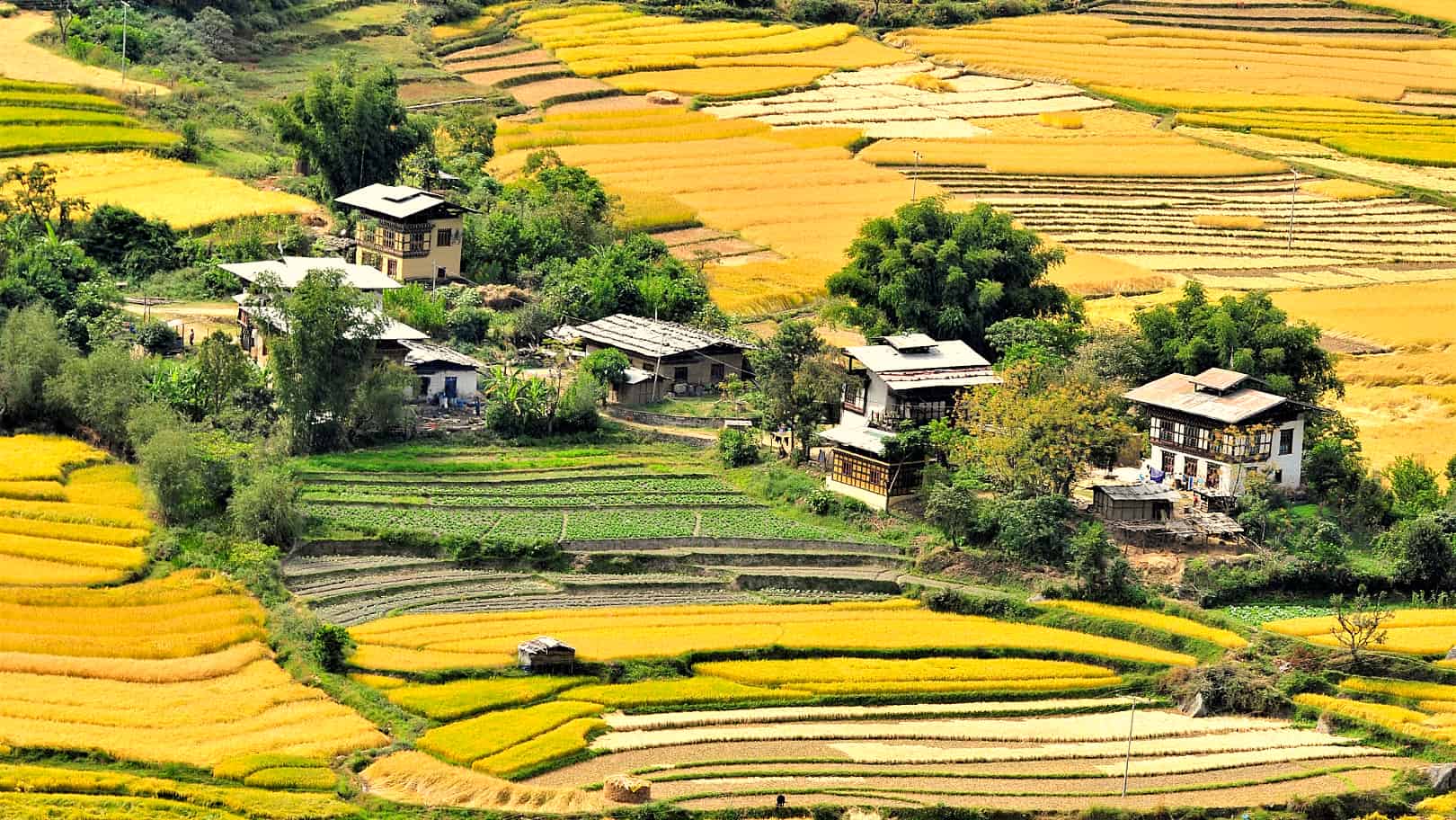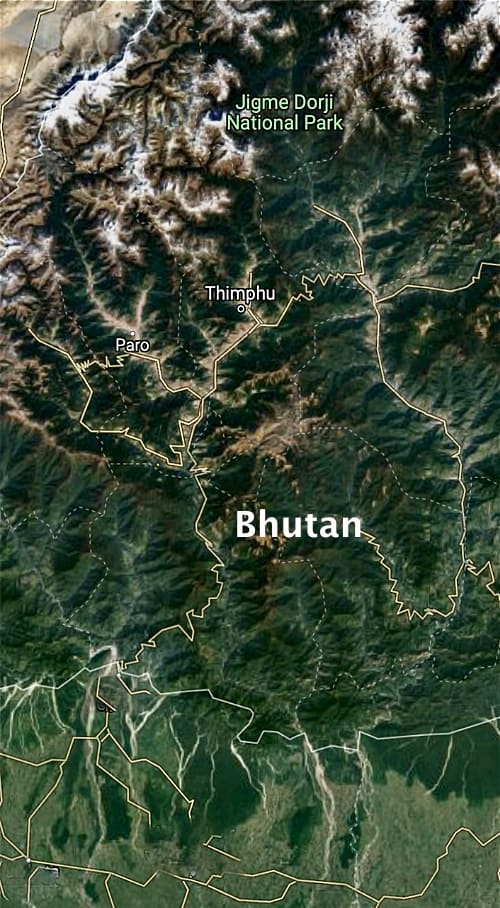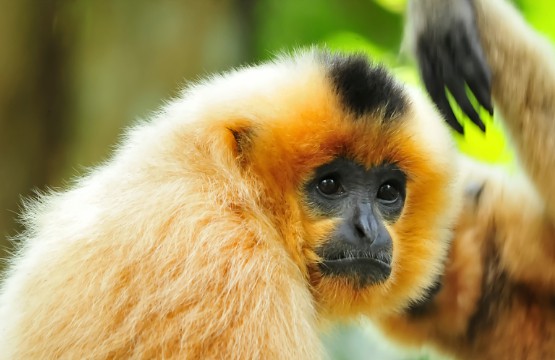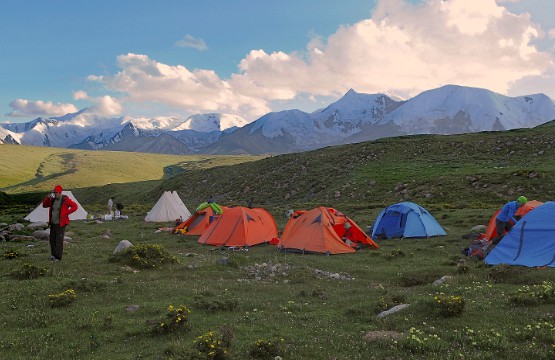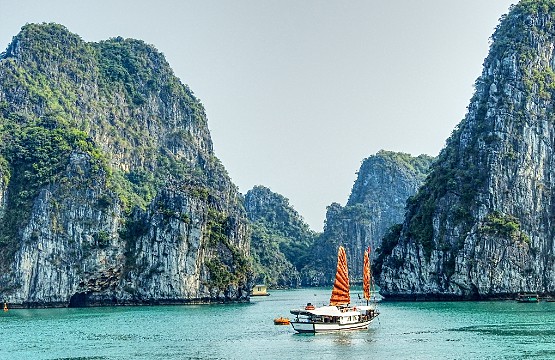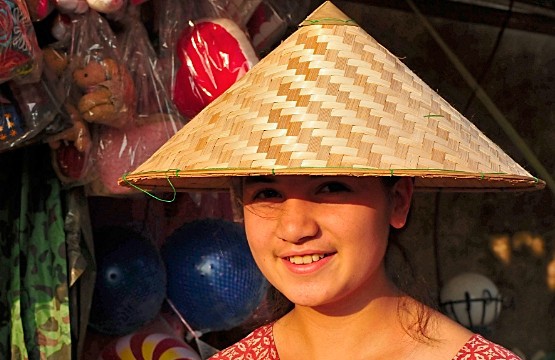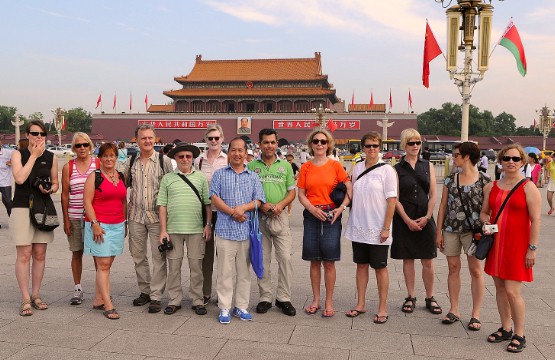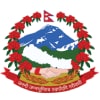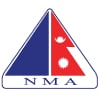Ancient Bhutan Trail: Nature, Culture & Adventure
This Bhutan journey is carefully tailored to suit the taste of those who loves nature, wants to immerse in exotic cultures and get thrilled in adventure. This holiday can take you in to stunning Buddhist temples, monasteries and pagodas, at their best and is sure to get you closer to... More
This Bhutan journey is carefully tailored to suit the taste of those who loves nature, wants to immerse in exotic cultures and get thrilled in adventure. This holiday can take you in to stunning Buddhist temples, monasteries and pagodas, at their best and is sure to get you closer to these fascinating cultural events, together with all the people and places that make Bhutan unique ever.
We visit all the major iconic spots in Bhutan in this trip and several Dzongs (fortress), monasteries, temples. In order to observe and understand Bhutanese way of life and their culture we plan to visit farmhouse, arts and craft school, nunnery, archery range, local market and witness festivals. Natural world and Bhutan is like synonyms and can feel its presence everywhere but to get you even closer and intimate experience with nature we embark on a short trek to Bumdra and spend a night under stars-filled sky in our tent – there, a sense of adventure awaits you away from the comfort of your own home in a camping tent enveloped by a quiet and dark night sky!
LessHighlights
- Participate in archery session (Bhutan’s national sport)
- Hike a mountainside to the iconic Tiger’s Nest Monastery
- Witness a traditional masked dance festival
- Enjoy the quiet streets of Bhutan’s sleepy cities, Paro and Thimpu
- Trek through tranquil forests and farmland
- Visit a school of arts and crafts in Thimphu and observe young girls and boys mastering the skills of thirteen arts and crafts
Upon arrival, meet by travel-to-nature Asia representative and transfer to your hotel. Please look out for your name-card once you exit out of arrival area.
Rest of the day free for individual activities. Overnight stay in Kolkata.
Accommodation: The Oberoi Grand
After breakfast transfer to the airport for your flight to Paro. If weather is clear one can enjoy the glimpse of eastern Himalayan ranges.
Welcome to Bhutan! Upon arrival in Paro, clear customs and immigration. Keep your copy of the visa clearance letter handy. Passport size pictures are no longer required and your visa has been paid. Meet your Guide and driver outside the terminal building who will bring to your hotel. Time permitting, visit sites around Paro including Rinpung Dzong and Kyichu Lhakhang (temple), Welcome dinner and overnight at the hotel.
Paro: Paro is one of the most beautiful valleys in the country with Bhutan’s only airport located here, among the terraced fields, and elegant farm houses. Willow trees line many of the roads, contrasting with bright colors of the fields and the most popular and important sites also found within Paro district. Paro town (2,280m) is still a small with one main street and less then one hundred small family-run shops. The weekend market in Paro is held on Saturdays.
Rinpung Dzong: meaning “fortress of the heap of jewels”. Built in mid 17th century, it now serves as the administrative and judicial seat of Paro district and residence for the 200 monks of Paro. It is also the venue for Paro festival held in the spring. Several years ago, the colorful movie Little Buddha was filmed here.
Kyichu Lhakhang: Tibetan King Songtsen Gompo in the 7th century miraculously built 108 temples, along with Jorkhang in Lhasa. Kyichu is considered to be one of them and is one of the oldest temples in Bhutan.
Accommodation: Tashi Namgay Resort
Meals: Breakfast, Lunch, Dinner
After breakfast, drive from the hotel for the archery session which will be organized by our representatives from the company.
Lunch at the local restaurant. After lunch visit Bhutanese traditional farm house, Drukgyel Dzong and the National Museum. Overnight in Paro.
Archery: Archery is played during religious and secular public holidays in Bhutan, local festivals (tsechu), between public ministries and departments, and between the dzonkhag and the regional teams. Archery tournaments and performances have also become a significant point of interest for tourism in Bhutan. Archery in Bhutan is the national sport of the Kingdom. Archery was declared the national sport in 1971, when Bhutan became a member of the United Nations.Since then, the popularity of Bhutanese archery has increased both inside and outside Bhutan,with a measure of government promotion. Bhutan also maintains an Olympic archery team.
Farm House or Village Home: Bhutanese farmhouses are colorful, decorative and traditionally built without any nails. Majority of the houses are with three story, first floor is utilized for sheltering cattle, second floor for the family to live in and the top for storing and drying of foods and fodder for animal. Almost all the farmhouses follow the same architectural pattern. A visit to farmhouse is interesting and provides you with an experience to the daily life of average Bhutanese.
Ruins of Drukgyel Dzong: Ruins of Drukgyel dzong stands 14 km north of Paro town at the end of the road. It was built in 1644 to commemorate the victory f Bhutan over Tibet. It served as the administrative and religious center for Paro until 1951 when fire broke out and damaged this huge structure. Now it stands in complete ruin.
National Museum: Established in 1967, the museum is housed inside a circular Ta Dzong, an ancient Watch Tower. It holds fascinating collection of arts, relics, religious thangkha paintings, households stuffs, arms, handicrafts, stuffed animals and Bhutan’s famous Stamps among others. (open 10-4pm).
Accommodation: Tashi Namgay Resort
Meals: Breakfast, Lunch, Dinner
After an early breakfast, we will drive Paro to Sang Chokhor, where our trekking crew members will be waiting for us. Our trek will start from here to Bumdra which is blessed by 100,000 dakinies.
A little above the place, we can also see a rock which is supposed to be Guru Rinpoche’s hat and underneath the hat, there is room where we can meditate and get the blessings from Guru Rinpoche. At Sang Choekhor, we can also visit Sang Choekhor Lhakhang, which is a Buddhist College.
The trek to Bumdra for about first 1-2 hrs walk will be ascent of a shady, forested ridge, brings us to a clearing with prayer flags and views down into both the Paro and Do Chhu Valley. Above and ahead the Chhoe Tse Lhakhang (temple) nestles on the mountainside a further one to two hours walk away. The trail undulates before the last steep section up to the pretty temple, which offers commanding views south over Paro and northwards to the snowcapped Himalayas. After a final 20-minute climb through ruins and fluttering prayer flags, we plunge back into ancient forest, and, after traversing for about 40 minutes, we come out onto a high wide meadow dotted with sacred chortens and prayer flags.
Our home for the night is tucked away just under Bumdra Monastery (Cave of a Hundred Thousand Prayers) and offers unimpeded views of the Himalayan range. After lunch we can visit the monastery and meditate there for a whole afternoon or just soak into the serenity. Dinner and overnight stay at the tented camp (3,800 m).
Accommodation: Camping Tent
Meals: Breakfast, Lunch, Dinner
After our breakfast, we will start our trek to Paro via Taktshang Monastery. After one to two hours of descent we catch glimpses of the golden roofs of temples below. The path snakes across the mountainside between these monasteries before reaching the gardens of Sangtopelri (Heaven on Earth) from which you can bravely peer over the edge and straight down onto the ornate rooftops of Taktsang Monastery perched against the cliff-face far below.
An hour later and we are at the gates of Taktsang looking across the gorge; a steep descent to a waterfall then up some steps and we are passing into Tiger’s Nest itself.
Lunch will be served as picnic hot lunch. Retracing our steps we begin the final descent of about 1 hr to reach our vehicle and drive back to Paro. Overnight in Paro.
Tiger’s Nest Monastery (Taktshang): Paro Taktsang was built around the Taktsang Senge Samdup cave, where according to the legend the Indian Guru Padmasambahva, who is believed to introduce Buddhism to Bhutan, meditated in the 8th century. According to the legend he was transferred to the cave on the back of a tigress. This is why the monastery got its popular name – the Taktsang, which literally means Tiger’s Nest. Here Guru Padmasambahva, according to the legend, meditated for three years, three months, three weeks, three days and three hours. Later the caves became a holy shrine. Numerous famous Buddhist monks have visited these caves from the 8th century onward.
Accommodation: Tashi Namgay Resort
Meals: Breakfast, Lunch, Dinner
After breakfast, drive to Thimphu, the capital of Bhutan and check-in to your hotel. After freshening up start sightseeing in and around the city.
Memorial Chorten: This landmark of Thimphu was built in 1974 in the memory of third King, Jigme Dorji Wangchuk, who is popularly regarded as Father of Modern Bhutan. It is a four-storey tall white building, containing statues and iconography of deities from complex tantric teachings and serves as an important place of worship for Thimphu residents, as well as from other parts of the country.
Zilukha Nunnery: It has been housed in Drubthob Goemba (monastery). There are about 70 nuns who live and pray every day in the monastery. The beautiful view of Tashicho Dzong can be seen from the nunnery.
Buddha Point: This is a new monument and main highlight of Thimphu valley. It has 165 meter high Buddha Statue.
Takin Sanctuary: Takin (Budorcas taxicolor) has been chosen as the national animal of Bhutan is based both on its uniqueness and its association with country’s history and mythology. It is said that Devine Madman, a popular saint is said to have created it with his magical power at a large congregation of devotees. It resembles like a cow from back and goat in the front and continues to befuddle taxonomists, who cannot quite relate to other animal.
School of arts & Crafts: (Open 9-5pm Mon-Fri and 9-1pm on Sat –with exceptions of holidays and breaks). Commonly known as ‘the painting school’ is a national institute where children attend six-year course that provides instruction in Bhutan’s traditional arts and crafts called Zorig Chuksum – meaning 13 crafts.
Paper Factory: Traditional papers were made from the daphne plant, using simple methods.
Weekend Market: The colorful weekend market of Thimphu is held from Friday-Sunday. Residents of Thimphu and country sides come to shop for food and clothes. There are some handicrafts and gifts shop as well, and provide a great photography scene.
Tashichhodzong: This fortress serves as the office of the King, ministers and various government organizations. It also is the headquarters for central monastic body of Bhutan. Bhutan’s spiritual leader Je-Khenpo and the monks of both Thimphu and Punakha reside here during summer. It is also the venue for Thimphu Festival in the fall season.
Drive from Paro to Thimphu: The distance of about 65 km from Paro town takes about little more than 1 hour. Drive south following Pachu river to the river confluence at Chuzom, which is also the hub of road network going to Paro, Ha, Thimphu and Phuntsholing. From Chuzom, the drive takes about 1 hour, staying close to the Wangchu River in the valley floor, as you pass through villages and suburbs to the capital, Thimphu. En-route, you can stop to view Tachogang temple and the nunnery at Sitsina.
Accommodation: Hotel Jumolhari
Meals: Breakfast, Lunch, Dinner
After breakfast we drive to Punakha. In the afternoon, visit historical Punakha Dzong – the sacred site of Royal Wedding and towards evening easy hike to the Fertility Temple (Chimi Lhakhang). Overnight stay in Punakha.
Punakha Dzong: Pungthang Dechen Phodrang “Palace of Great Happiness” popularly known as Punakha Dzong, located on the confluence of two rivers; Pho and Mochu was built in 1637 by Shubdrung Nawang Namgyal. It serves as winter residence for the Central Monastic body, which migrate from Thimphu to Punakha in the winter. It is also the venue for Punakha Festival held in February or March.
Fertility Temple (Chimi Lhakhang): A monastery and fertility temple dedicated to Lama Drukpa Kuenley, a Tibetan Buddhist saint known popularly as “the divine madman” and considered a folk hero in Bhutan for his unconventional ways. Drukpa Kuenley originally built a chorten on the site in the 14th century, on which a temple was later built in 15th century. The temple, flanked by nearly 100 tall prayer flags, sits atop a picturesque hill. It has long been a pilgrimage site for childless couples. This easy walk takes about ½ hour each way.
Drive from Thimphu to Punakha: The drive from Thimphu (79 km) takes about 3 hours. The road climbs from Thimphu to Dochula pass and descends through ever changing forests into the semi-tropical valley of Punakha and Wangdi at around 1,200 m. En-route stop at Dochula pass (3,050 m) where you can view the eastern Himalayas, including Bhutan’s highest mountain, Gangkar Punsum (7,550 m).
Accommodation: Meri Puensum Resort
Meals: Breakfast, Lunch, Dinner
Drive to Jakar (Bumthang) across Pelela pass via Trongsa. Upon reaching Trongsa, visit Trongsa Dzong which is the largest Dzong in Bhutan. Dinner and Overnight in Bumthang.
Trongsa Dzong: Built on a spur overlooking the gorge of the Mangde River, a temple was first established at the location in 1543 by the Drukpa lama, Ngagi Wangchuk son of Ngawang Chhojey. In 1647, his great-grandson Shabdrung Ngawang Namgyal (Shabdrung or Zhabdrung being his title), constructed the first dzong to replace it, called Chökhor Rabtentse Dzong with a shorter version of Choetse Dzong. It was enlarged several times during the 18th century; the Chenrezig Lhakang was built in 1715 and a whole complex, including the Maitreya (Jampa) temple, was added in 1771. The dzong has since been repaired on several occasions; it was damaged during the 1897 Assam earthquake and underwent extensive renovation in 1927 and 1999
Drive from Punakha to Jakar via Trongsa: The drive to Jakar (Bumthang) takes about 6-8 hours covering distance of approx. 240 km. The road climbs Pele La pass (3,400 m) where we make a stop for views of the snow clad peaks, including that of Bhutan’s sacred peak Mt. Chomolhari. After crossing Pelela pass, descend and pass through the villages of Rukubji, Chendebji, Sephu, Langtel and several other villages and arrive in Trongsa for lunch.
From Trongsa, the drive to Jakar takes about 2 ½ hrs. Climb from Trongsa to Yotong La (3,551 m) and descend into Chumey valley (2,700 m), the first of four Bumthang valleys. Then it is another 45 minutes, past the villages of Zugney and Prakar. Drive further across Kiki la pass (2,860 m) to arrive at Jakar, the administrative center of Bumthang district.
Bumthang is justifiably regarded as the cultural heartland of the kingdom with its many temples, holy sites, languages and traditions. It is here that most kings, rulers or priest were buried or cremated. There are four valleys and Jakar at 2,800 m in Chokhor valley is the administrative center and the main town of Bumthang district.
Accommodation: The Mountain Resort
Meals: Breakfast, Lunch, Dinner
Bumthang sightseeing includes these sites: Jambay Lhakhang, Jakar Dzong, Chamkhar Lhakhang, Kurje temple, Tamshing Monastery, Kenchosum temple, Swiss. Dinner and overnight in Bumthang.
Jambay Lhakhang: Jambay Lhakhang is another one of the geomantic temples (like Kichu in Paro) founded in 7th century by a Tibetan King Songtsen Gompo, this time on the ‘left knee of the ogrees’. Guru Rinpoche is said to have taught the local king Sindhu Raja from the temple roof in the 8th century.
Jakar Dzong: “Jakar Dzong” literally meaning castle of the white bird is in a picturesque location overlooking the Chokhor valley. The current structure was built in 1667 and later refurbished in 1683, is said to be one of the largest dzong in Bhutan, with impressive fortress walls, elegant structure but rather simple interior.
Kurjey Lhakhang: Kurjey is named after the sacred power place where Guru Rinpoche (8th century) left the imprint of his body on the solid rocks, which can be seen from inside the shrine. There are three large temples within the complex surrounded by a perimeter comprising of 108 stupas. Upon entering, the first temple to the right is Guru Lhakhang (which houses the cave) dating from 1652. The middle temple Sampalundrup was built by the first King Ugyen Wangchuk in 1900, during his tenure as Trongsa Penlop. The third temple is recently constructed under patronage of Her Majesty queen mother Ashi Kesang Wangchuk.
Tamshing Temple: Located opposite Kurjey Lhakhang and involving easy walk is temple founded by Bhutan’s own religious treasure discoverer, Terton Pema Lingpa in 1501. Believed to be the reincarnation of Guru Rinpochey, he discovered many religious treasures around the country. The original murals on the walls still survive, which are considered to be the oldest extant painting in Bhutan.
Swiss Farm Area: There is a small factory on the other side of the river which produces Swiss Cheese, Bumthang honey and apple wine and local beer called ‘Red Panda’. It is an interesting place to visit and taste some local made products, started by a Swiss Bhutanese.
Accommodation: The Mountain Resort
Meals: Breakfast, Lunch, Dinner
After breakfast drive to Mongar through Ura village, and Thrumshingla pass 3,750 m which is the highest pass in the east-west highway. Picnic lunch will be served en-route. You will begin your journey to the eastern Bhutan, which is different from western and central Bhutan in terms of language and culture. The drive on this is is an exhilarating 6 hours from Thrumshingla pass and once again you will see the spectacular views of Himalayan range in clear days. Upon reaching Mongar visit Mongar Dzong. Overnight in Mongar.
Mongar Dzong: The present Mongar Dzong was rebuilt in 1953 and is unusual because it has two entrances. It is two storey high with the utse (central Tower) in the centre of the courtyard. The Dzong was established here in 1930 to replace the original Shongar Dzong, although the utse dates from an earlier time. There are 50 to 60 monks in the dzong, many of them young boys aged eight to 10 years old. The images in the Lhakhang are of the Buddha of Long Life, Tshepamey, as well as Guru Rinpoche and the Shabdrung.
Mongar: The Mongar district is the northern portion of the ancient region of Khyeng. Most towns in the west of Bhutan are in valleys. In eastern Bhutan most towns, including Mongar, are on the top of the hills or ridges. A row of large eucalyptus trees protects the town from wind. Mongar was redesigned in 1997 when a bypass road was constructed and a large part of the bazaar razed and rebuilt.
Accommodation: Hotel
Meals: Breakfast, Lunch, Dinner
This trip of about 96 km and takes 3 hours passing through Kori la pass (2,450 m), the place marked by a pretty chhorten and a stone wall. The first part of the journey is through leafy forest filled with ferns. Later road descends rapidly through corn fields and banana groves arriving the famous ziazags of Yadi, which is a recent settlement. After that follows the Gamri river until the bifurcation to Dametsi, this temple perched on top of steep hill was founded by Choeden Zangmp and is the most important monastery of eastern Bhutan. This is the place from where famous Naga Chham, mask dance with drums originated. About 30 km onwards lies Trashigang at 1,000 m. Trashigang is the centre of the biggest and most populated district in the country. Visit Trashigang Dzong, standing at the extreme end of the spur, overhanging the Gamri river. It serves as the administrative seat for the district and part of the Dzong is occupied by the Drukpa monastic community. Overnight in Trashigang.
Trashigang Dzong: A 17th century fortress standing at the extreme end of the spur on a high promontory that overlooks the confluence of the Drangme Chhu(River) and the Gamri Chhu(River). Trashigang Dzong was built in 1667 by Mingyur Tempa,Bhutan’s third Desi. Trashigang Dzong is different in that both the Administrative and Monastic sectors face onto a single dochey. Many lama dances are performed in Trashigang to appease Yama. You will find a length of chain from the old Chazam iron bridge lying atop a wall in the outer courtyard of the Dzong.
Trashigang: Trashigang is the heart of eastern Bhutan and was once the centre of important trade with Tibet. Trashigang is a reasonably large town with lots to explore. Trashigang is at foot of a steep wooded valley with the tiny Mithidang Chhu running through it. The road enters from north.
Accommodation: Hotel Druk Deothjung, Trashigang
Meals: Breakfast, Lunch, Dinner
The winding drive from Trashigang to Samdrup Jongkhar takes at least six hours covering a total distance of 180 km. Shortly after leaving the town, the road winds its way up, though terraced fields up to Kanglung, where you can see extensive campus of Sherubtse College. Then the road climbs and cuts across the ridge into another valley, winds down slightly to Gumchu and then around the corner, arrive in Khaling, spread out in a high side valley above the Drangme Chhu. Khaling has a large High School campus, small town, a Institute for disabled (a school for blind and other disabilities) and around 3 km beyond Khaling, is the National Handloom Development Project operated by Women’s Association of Bhutan. After Khaling the road traverses above the small villages, fields and crosses Kharungla. Then cross the ridge and climb to 1920m before making the final decent and arrive in Deothang after about 2hrs from Pema Gatshel junction. Deothang is dominated by a large Army camp with few some shops and road workers homes. From Deothang, it takes around half hour to cover 18 km descent to the valley floor. The vegetation changes almost abruptly to Sal and teak forests as you enter Samdrup Jongkhar. Hot pack lunch will be served en-route. Dinner and overnight stay in Samdrup Jongkhar
Samdrup Jongkhar: The town is located at the south-eastern part of Bhutan and borders the Indian state of Assam. Though there is no clear historical record of the development of the town, it is said to have developed as a result of the construction of the Samdrup Jongkhar-Tashigang national highway in the 1960s. In the past the Sharchops of Tashigang, Dundsan, Orong and yangtse used to trade in a small town called Gudama (current day Mela Bazaar). Today it is one of the most important trading towns for the eastern districts of Bhutan. Samdrup Jonkhar Dzongkhag has a mix of population largely dominated by the Sharchops and by Lhotshampas in Bangtar. It is also an important economic center of the country where coal mining is an important contribution to the country’s economy.
Accommodation: Druk Mountain Hotel
Meals: Breakfast, Lunch, Dinner
After breakfast, we will bid goodbye to your Bhutanese guide & driver and proceed to the border check post. After border formalities we will be picked up from Samdrup Jongkher and transferred to Guwahati Airport for a flight to Kolkata. Approximately 100 km and takes about 3-4 hours through the beautiful landscape.
Upon arrival at the airport we will be transferred to your hotel by our representative. Rest of the day free for individual activities such as wellness massage, shopping or simply take time to relax by the pool at our hotel. Overnight stay in Kolkata.
Kolkata, which was called Calcutta until 2001, is the capital of the state of West Bengal. Kolkata is an industrial city, transport hub and cultural centre with museums, galleries, universities, theatres and cinemas. In addition, the city is the Catholic bishop’s seat and an important Hindu place of pilgrimage.
If time permits, we take a traditional tram ride, a “Sunset Cruise” on the Ganges, India’s holy river, and visit sights such as the imposing Writers Building, the Victoria Memorial Hall, the Jalighat Temple, the ashram of Mother Teresa, the newly renovated City Hall, but also the house of the famous Indian writer Rabindranath Tagore.
Accommodation: The Oberoi Grand
Meal: Breakfast
After your leisurely breakfast, explore bit of Kolkotta city by visiting Flower Market, Victoria Memorial Hall, Jalighat Temple and visit Ashram of Mother Teresa.
Rest of the day free. Overnight in Kolkata.
Accommodation: The Oberoi Grand
Meal: Breakfast
Transfer to airport for your homeward-bound flight.
Meal: Breakfast
Included
- Airport (pick up/drop off) transfers by private A/C vehicle
- Bhutan visa
- Twin-Sharing accommodation in all Hotel/Resort/Lodge as mentioned
- All meals, afternoon tea and bottled water throughout the tour
- All sightseeing as per the itinerary
- English speaking licensed guide
- Private vehicle with a driver and long road permit
- Monument/museum entrance fees
- Farmhouse visit and a meals
- Temple Ceremony & Blessing
- Royalty and all internal taxes
Not Included
- International flight
- India visa (make sure to get a DOUBLE entry visa)
- Travel insurance & vaccinations
- Meals not mentioned in the itinerary
- Personal clothing & equipment
- Tips for trip leader/guide, driver, hotel staff and porters
- Items of personal nature such as alcoholic beverages, soft drinks, laundry, showers and other unforeseen expenses
- Anything not mentioned in the above ‘Included’
- Extra expenses/payment for 'Optional' activities/programs if participated
Price: US$ 4,895 per person (Twin Sharing Basis | Based on Minimum 3 Travelers)
Single Supplement: US$ 535
Bhutan Visa Fee: US$ 40
Your Feedback
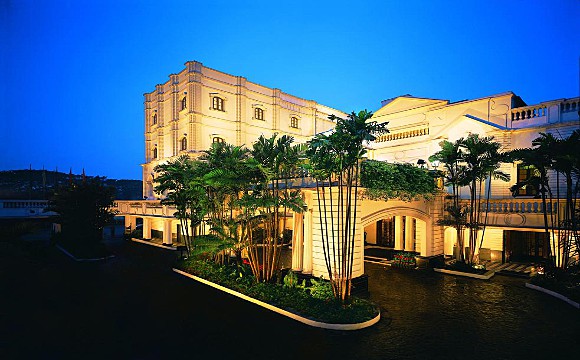
The Oberoi Grand, Kolkata
Fondly referred to as the Grand Dame of Chowringhee, our 5 star hotel: The Oberoi Grand has been an icon on the landscape of Kolkata for more than a century; with a reputation for taking care of its guests that befits the best hotel in Kolkata.The sense of calm that pervades the outdoor space is carried into the classically appointed rooms and suites that encircle the courtyard.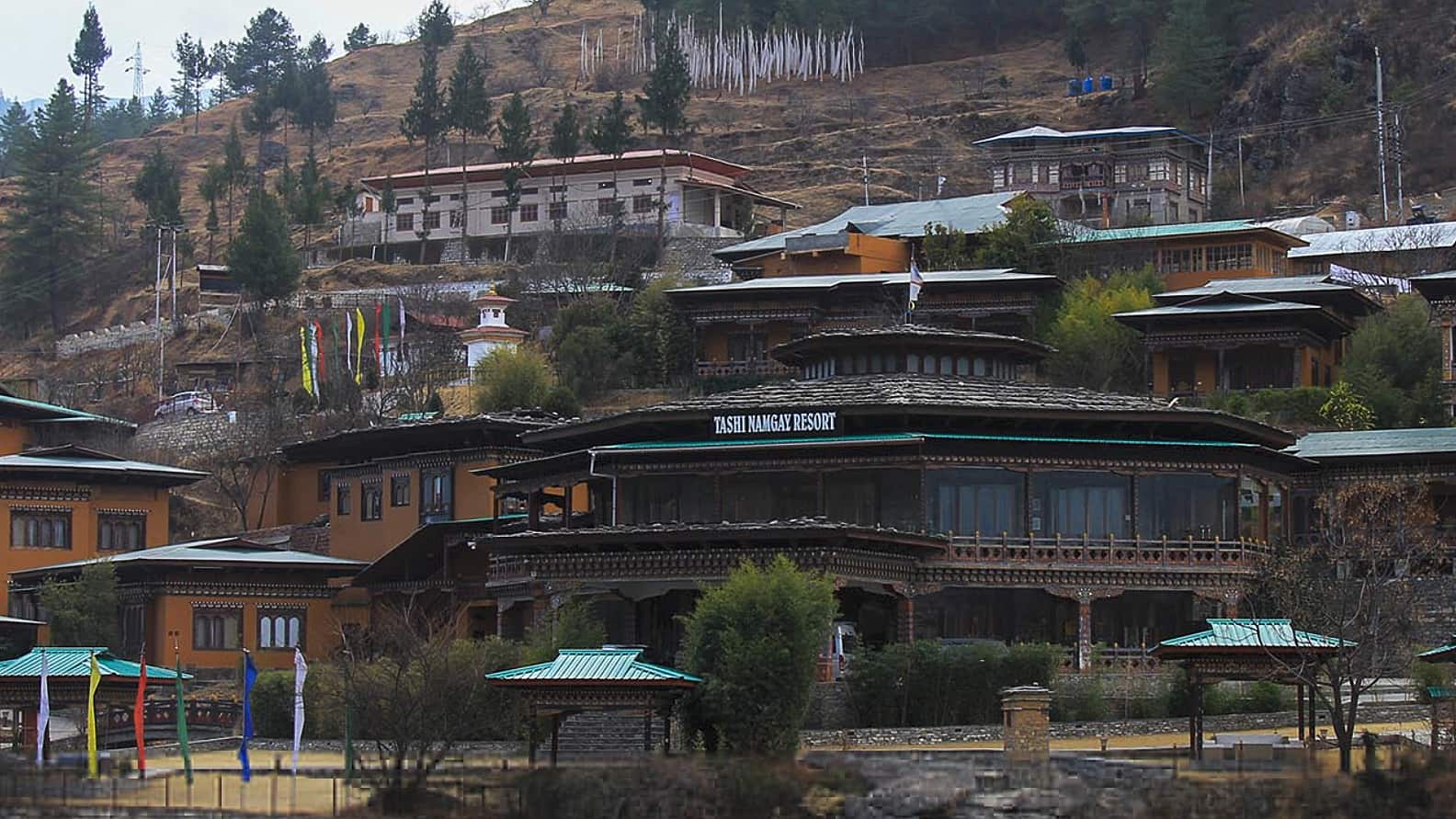
Tashi Namgay Resort, Paro
The resort is set amidst five acres of lush foliage and green lawns. Located conveniently in the heart of Paro Valley but away from the distractions of the main town, Tashi Namgay Resort offers you a calm and peaceful environment within its compound. Traditional Bhutanese and modern architecture have been uniquely blended, yet offering all the amenities of a modern lifestyle.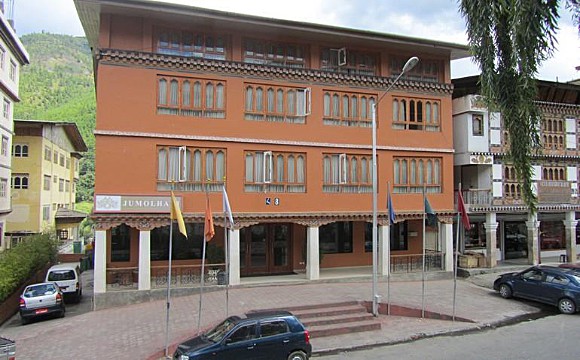
Hotel Jumolhari, Thimphu
Hotel Jumolhari has been providing quality services to travelers and adventurers for 31 years. Established in 1984, the hotel has rooms ranging from the standard to deluxe & suites. Recently renovated Hotel Jumolhari has firmly established itself as the leading hotel in Thimphu. The traditional Bhutanese hospitality combined with a distinctive boutique style décor makes it one of the most distinguished addresses in Thimphu.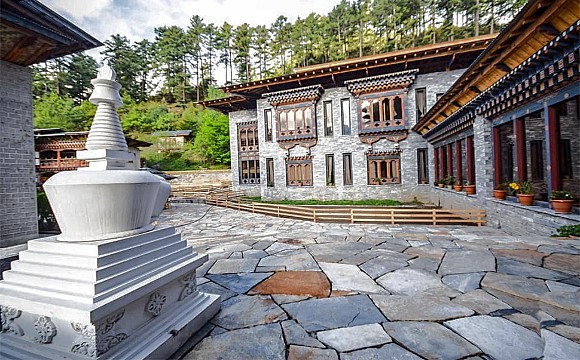
The Mountain Resort, Bumthang
The Mountain Resort in Bumthang has come a long way without losing its roots. Our family-run resort was started by a man of exceptional kindness, who dreamed of a place that would be gracious, spacious, and rooted in the genuine traditions of Bhutanese hospitality - a place brimming with the love of our dearly beloved family elder.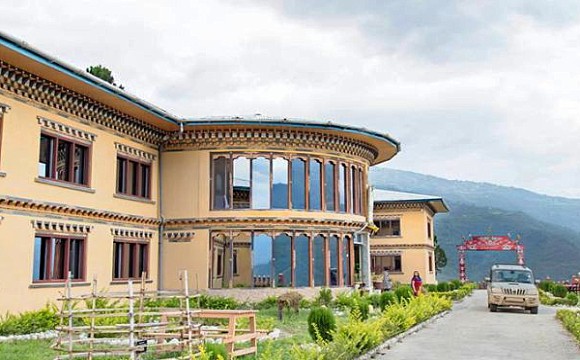
Hotel Druk Deothjung, Trashigang
Hotel Druk Deothjung in Trashigang is located 3 km away from the Trashigang town, overlooking the valleys of Drangmey Chhu, lies the Druk Deothjung Resort. With modern amenities yet with the touch of Bhutanese architectural design, in wrought with artistic paints and crafts displays the richness in culture and luxuries of life in 70 rooms with 13 executive lounges.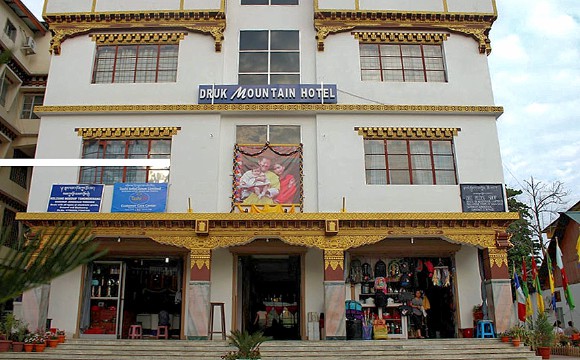
Druk Mountain Hotel, Samdrup Jonker
Mountaini Hotel is simple but have clean accommodation located in heart of Samdrup Jonker. Rooms here are clean, spacious, appropriately furnished and equipped with air condition while the bathrooms are simple but clean and adequate. The room amenities include: attached bath, running hot & cold water, TV, air-conditioned rooms, phone. Hotel’s acilities also include, restaurant, money change, laundry service etc.Giving back to the communities is our responsibility!
With every trip, you also support the SWAN and thus projects for Sustainable Community development and Biodiversity protection.
Our primary NGO partner is Social Welfare Association of Nepal (SWAN), with whom we have carried out multiple CSR (Corporate Social Responsibility) projects. Besides carrying out regular CSR activities in the areas of education and women empowerment, we have supported relief and rehabilitation initiatives in the aftermath of several natural disasters like earthquake, immediate response to COVID-19 pandemic across Nepal.
Giving something back to the world is a special and responsible affair of travel-to-nature Asia right from its inception. When you travel with travel-to-nature Asia and SWAN-Nepal, you become an integral force for change in addressing the most pressing social and wildlife conservation issues. Your tourism funds help transform the future of under-privileged and marginalized communities and transform the future of at-risk natural places you travel. Portion of our profit flows to local communities who live with and steward nature, creating jobs and improving livelihoods.
By joining one of our holidays you are playing a vital role in bringing positive changes in the lives of local community.




